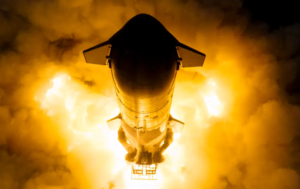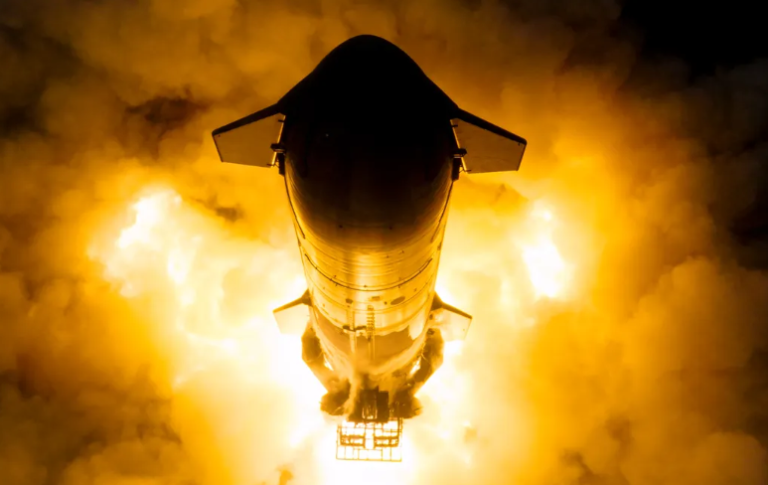SpaceX’s Starship megarocket is revving up for its fifth test flight, even before the fourth has taken off. Recently, SpaceX conducted a “static fire” test with a Starship upper stage at its Starbase site in South Texas. This test involved igniting all six of the vehicle’s Raptor engines while it remained anchored to the pad. These static fires are common procedures before a launch.
However, the focus isn’t solely on this particular vehicle. The next in line for liftoff is the Flight 4 Starship, potentially happening as early as this month. SpaceX has already completed static fires for both elements of this flight – the upper stage, called Ship, and the giant Super Heavy first-stage booster. The Flight 4 vehicle seems good to go, but there’s a hitch: SpaceX still needs to secure a launch license from the U.S. Federal Aviation Administration (FAA). The FAA is investigating the most recent Starship liftoff, which happened on March 14.
During that third flight involving a full Ship-Super Heavy stack, things went pretty smoothly. The two stages separated as planned, and Super Heavy nailed its “boostback” burn, positioning itself for a planned splashdown in the Gulf of Mexico. The upper stage, on the other hand, reached orbital velocity and stayed in flight for about 50 minutes – a significant improvement from previous attempts. However, both stages ultimately broke apart, with Super Heavy breaking up about 1,650 feet above the water and Ship meeting its end during reentry into Earth’s atmosphere.
